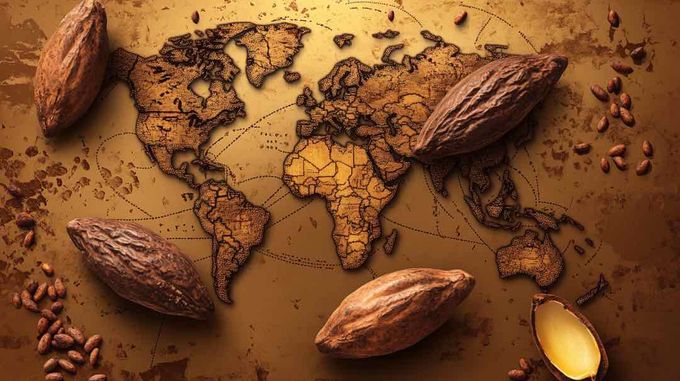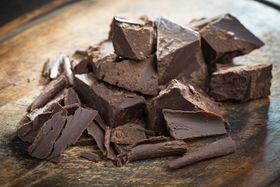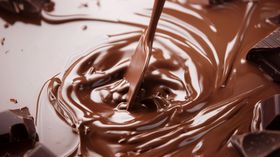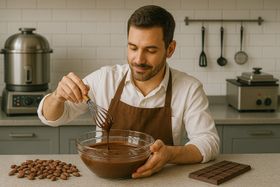Does Cacao Have a Single-Best Origin?
Can the 'best' cacao be defined by geography alone? Explore the factors that influence cacao quality, from sustainable farming practices to the artistry of chocolate making
Published January 13, 2025

The question of cacao's "best" origin sparks passionate debate among chocolate makers and enthusiasts worldwide. While some regions claim superiority based on historical significance or genetic varieties, the reality is far more complex.
Let's explore why the concept of a single "best" origin oversimplifies the rich diversity and nuanced quality factors in cacao production.
» Indulge in the purest chocolate experience with single-origin cacao
Historical journey of cacao
Before we can debate the best origin, we must understand where cacao originated. Archaeological evidence and genetic studies point to the Amazon region as cacao's birthplace, particularly in what is now Ecuador, Peru, and Colombia.
Ancient cacao residue has been discovered in pottery and artifacts from the Amazon basin dating back at least 3,000 years. The genetic diversity of cacao trees in the upper Amazon regions also supports this area as the primary source of domestication.
The spread of cacao from its Amazonian homeland reveals a fascinating story. Here are key developments:
- The Spanish conquest brought cacao to Europe, where it underwent a significant transformation. Spanish innovators added sugar to the traditional bitter drink, creating what we now recognize as chocolate.
- Religious convents in Spain played a crucial role in developing early chocolate recipes, initially keeping it as a privileged beverage for the wealthy.
- The development of chocolate-making technology in Switzerland and Belgium revolutionized the industry, introducing techniques for achieving the silky-smooth texture we associate with fine chocolate today.
» Understand how traditional chocolate is made
Modern cacao-growing regions
Cacao cultivation presents a unique challenge, thriving only within a specific and limited equatorial belt. Despite these constraints, production has evolved significantly from its historical origins, with diverse regions now contributing to the global supply of high-quality beans.
Central and South America
As cacao's birthplace, this region offers incredible diversity. The Amazon basin's rich biodiversity and specific soil composition contribute to layered flavor development.
Ecuador's unique combination of coastal climate and elevation produces fine-flavor cacao with complex profiles, including:
- Floral notes of jasmine and orange blossom
- Bright citrus and green banana undertones
- Clean finish with lingering stone fruit
Venezuela's Criollo varieties, growing in coastal valleys with perfect drainage and humidity, produce some of the world's most prized cacao. The typical flavor profile is:
- Toasted nuts and brown butter
- Gentle spice notes
- Long-lasting caramel sweetness
Renowned for its rich agricultural heritage, the Piura region in northern Peru is a prime location for cacao cultivation, producing distinctive beans, including the highly sought-after white Criollo variety. It's often described as having notes of:
- Deep red wine with a slightly tannic depth
- Subtle hints of raisins
- Balanced, lingering finish
» Discover the exquisite taste of Peruvian chocolate from the Piura region
West Africa
The largest cacao-growing region in the world benefits from ideal soil conditions enriched by the weathering of ancient rock formations. The region's two distinct rainy seasons create the humid conditions cacao needs, while protected forest areas provide the right amount of shade.
As a a top producer, Tanzania's cacao typically produces:
- Dark fruit and raisins
- Subtle wine notes and spice
- Complex fruity finish
Southeast Asia
Indonesia and Malaysia have emerged as significant producers thanks to their equatorial climate and high rainfall. The region's high humidity and consistent temperatures create perfect growing conditions, though these same conditions can also present challenges for drying the beans.
Indonesian cacao, particularly from Sulawesi, often develops the following characteristics due to the volcanic soil composition:
- Pronounced smoky characteristics
- Forest floor and mushroom notes
- Complex earthy undertones
» Taste the refined flavor of single origin beans in bean-to-bar chocolate
Caribbean
The Caribbean islands offer unique microclimates where small amounts of high-quality cacao are grown.
Trinidad's natural shade from larger trees and regular rainfall patterns create distinctive flavors:
- Fresh berries and tropical fruits
- Light floral notes
- Bright fruitiness
The Dominican Republic's mineral-rich soil and coastal climate offer their own unique profiles:
- Wine-like red cherry notes
- Rich blackberry character
- Bright, vibrant acidity
Why "best origin" is a misleading concept
Although there are regions known for growing good chocolate, there's more to cacao than that. The concept of a single "best" origin for cacao is a misconception that oversimplifies the complex nature of chocolate quality. Several factors influence cacao quality:
Terroir
Much like wine, terroir plays a crucial role. The specific combination of soil composition, elevation, rainfall patterns, and local biodiversity creates unique growing conditions that influence flavor development. Volcanic soils can impart mineral notes, while limestone-rich areas may produce cacao with brighter, more acidic profiles.
Even within a single country, different microclimates can produce dramatically different flavor characteristics.
» Explore the benefits of theobromine you can find in cacao
Genetic diversity
The type of cacao adds another layer of complexity. Criollo varieties might thrive in one location while being unsuitable for another. Modern hybrid varieties have been developed to combine disease resistance with fine flavor characteristics, allowing quality cacao production in previously challenging regions.
» Find out more about the antioxidants in cacao
Farming and processing
Farming practices and post-harvest processing are equally important as location. Expert farmers understand the delicate balance of shade management, pruning techniques, and optimal harvesting times.
The fermentation process develops chocolate's complex flavor precursors. It requires precise control of temperature, humidity, and timing—skills often passed down through generations of farming families.
This is why chocolate makers often focus more on building relationships with farmers and understanding their processing methods rather than seeking beans from traditionally celebrated regions.
» Experience cacao's health benefits with minimally processed ritual cacao
Sustainability
Climate change is reshaping traditional growing regions, forcing adaptation and innovation. Some historical cacao-growing areas are becoming less suitable, while new regions are emerging as potential future growing zones. This shift is driving research into more resilient varieties and sustainable farming practices.
» Discover every step in the single-origin, bean to bar chocolate process
How to find the best single-origin cacao
Finding the best single-origin cacao requires looking beyond marketing claims and understanding several critical factors that truly determine chocolate quality. Here's what matters most:
- Direct trade relationships with farms indicate quality sourcing. Makers who work closely with farmers often secure first pick of the harvest, can influence post-harvest handling, and typically pay premium prices that incentivize better farming practices.
- Post-harvest handling, particularly fermentation and drying, dramatically affects flavor development. Look for makers who provide specific details about these processes and work directly with farms to control these crucial steps rather than buying commodity beans.
- Awards and certifications should be viewed in context—many excellent small-batch makers skip competitions due to cost and time constraints, while some award-winning bars may not align with your personal preferences.
- Personal taste preferences should ultimately guide your choices—experiment with different origins and makers to discover what you enjoy, whether that's fruity Madagascar beans, nutty Venezuelan cacao, or floral Ecuadorian varieties.
» Enjoy the lightly sweetened goodness of date-infused chocolate
Honoring the unique characteristics of each bean
Quality depends on many factors beyond geography—from farming practices and processing methods to environmental conditions and maker expertise. Rather than seeking a single 'best' origin, appreciate how different regions, traditions, and methods contribute to the rich diversity of chocolate available today.
At KAICAO, we embrace this philosophy by carefully adjusting our roasting profiles and processing methods to match the specific characteristics of each harvest. Our commitment to transparency means you can trust that every bar reflects the true character of its origin.
By using dates as our natural sweetener and employing minimal processing techniques, we ensure you experience the authentic flavor profile of each origin, unmasked by excessive processing or overwhelming sweetness. This is what makes KAICAO chocolate unique—a pure expression of each origin's distinctive character
Indulge in the finest single-origin cacao
Disclaimer: The chocolate information provided by KAICAO is intended for educational purposes related to chocolate products. We encourage you to embrace the chocolate experience, savor each moment, and explore the world of chocolate with passion.






